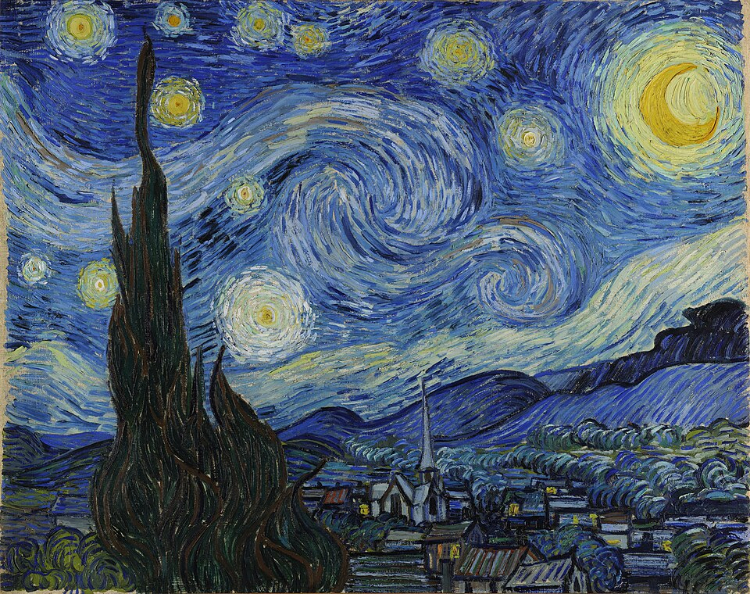The Starry Night by Vincent van Gogh

The Starry Night
It's everybody's favorite dorm room poster - The Starry Night!
van Gogh painted this while staying as a voluntary resident of an asylum. The painting is a view from his room, minus the iron bars.
Typically, van Gogh was insistent on painting subjects while viewing them. The Starry Night made this more difficult as a member of his Nocturne (essentially night view) series, when pastoral lighting in the late 19th century was hard to come by. As a result, the subject is more of an amalgam than a strict interpretation of his view at the time (for instance, the village doesn't even exist outside of the asylum).
Both Vincent and his brother, Theo, were unhappy with the painting upon its completion. Despite that, it lived on to become a cultural favorite, especially when viewed under a college freshman's blacklight against a cinder block wall.
Impasto
Less a delicious Italian dish and more a paiting technique used to add texture to a painting, impasto is a means of layering paint onto a canvas thickly to add a sense of emotion to the painting or influence the lighting reflecting against it. Often the artist uses a palette knife for application instead of a brush, as though the paint were some sort of colorful schmear to an aesthetic bagel.
The swirls in the painting further convey a sense a emotion in their dynamism. At times the brushwork was so hurried with expression that parts of the canvas beneath were left bare.
Death tree!
The dark form to the left of the painting is a cluster of Cypress trees, which, in Europe, is often associated with death. The actual trees on the grounds of van Gogh's asylum were significantly farther away, but are much closer in the painting - likely for aesthetic reasons rather than an imminent representation of death.
However, critics generally agree, that the trees here serve as a link between the more earthly realm from which they originate to the unbounded sky above. With that in mind, there is a potentially greater symbolism at play, as the sky represents spirituality while the earth below the skyline, with its darker shading, represents our current mundane existence.
The church spire in the village to the right serves a similar purpose to bridge the two halves of the painting.
